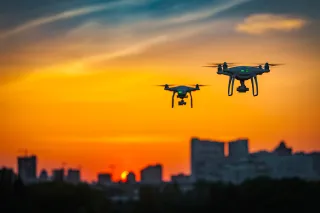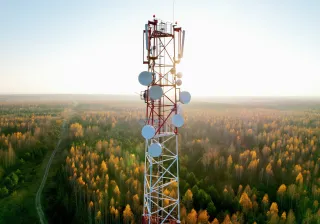Digitalisation is increasingly integrated into our daily lives. At the same time, products and services are expected to be efficient and have the lowest possible carbon footprint. Solutions can be found, for example, in specialised microelectronics and quantum technology, where Finland and VTT have a long history of development.
What do self-driving cars, quantum computers, sports watches and hyperspectral cameras that assess the freshness of food, for example, have in common? Maybe not much on the surface, but they all require specialised microelectronics; in other words, tiny electronic components or sensors that allow, for example, a self-driving car to observe its surroundings in different weather conditions. Microelectronics also enable a quantum computer to solve problems that other computers cannot tackle.
Not all microelectronics is specialised
Mainstream microelectronics (processors, memories) can be found in a wide range of consumer products. A typical example is the processor in a mobile phone or a computer. Such chips are produced in highly capital intensive factories by few large manufacturers in Asia, the United States and some European countries such as Germany and France.
Finland focuses on specialised microelectronics technologies that have been developed and researched here for a long time. For example, microelectromechanical systems (MEMS), radio frequency (RF) technologies, photonics and quantum technologies are based on specialised microelectronics. In practice, their applications range from the ground to space, from sports watches and mobile phones to satellites.
Specialised technologies increase features and efficiency
Specialised microelectronics technologies use new materials and manufacturing processes that enable completely new functionalities compared to mainstream microelectronics. They can also improve the efficiency of existing functionalities and energy use and increase computing power. From a climate perspective, the most important aspect is that specialised microelectronics enables products and processes to work more efficiently and consume less power. For example, increasing the efficiency of data transmission will save huge amounts of energy on a global scale.
Quantum technology is also based on specialised microelectronics: the development of quantum computers and quantum computing would not be possible without it. The purpose of developing quantum computers is to tackle tasks that are either practically unsolvable for current computers or would demand significant amounts of energy from classical computers.
Applications for specialised microelectronics are all around us. Automotive accelerometers are MEMS sensors that trigger airbags to inflate in the event of an accident. The tradition of RF technology dates back to the early days of Nokia’s mobile phone development. Today, the development of 5G and 6G networks is based on modern RF technology. Photonic components are used in everything from sports watches to optical data transmission in data centres.
Strong skills lead the way to the future
Finland’s high level of education, materials technology skills and design expertise lay an excellent foundation for the development of specialised microelectronics and quantum technologies. Specialised microelectronics is the deep technology forming the heart of digital systems. Finland is well-positioned to remain a leader in this technology in the future. This enables us to contribute to determining the direction for digital technologies.












